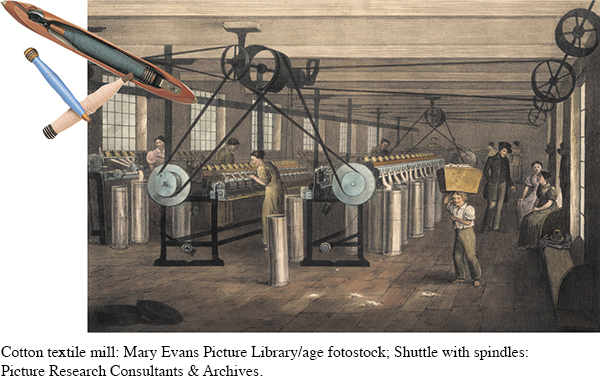
VISUAL ACTIVITYCotton Textile Mill, 1840 New England textile factories ran on the power of coursing rivers. The linear motion of the river was converted to rotary motion by large waterwheels. A complex series of belts and wheels delivered that motion to the various floors of the factory. This room contains “spinning frames,” machines that replaced spinning wheels, turning cleaned cotton into yarn for textile weaving.READING THE IMAGE: Study the women workers shown here. What do you imagine they might be doing at this power machine? Does this image suggest that the work is stressful or dangerous? What might be the uses of such an image in 1840?CONNECTIONS: Why was the antebellum textile industry located primarily in New England? Consider the geography and climate that promotes coursing rivers, as well as demographic factors that produce an adequate labor force.
Cotton textile mill: Mary Evans Picture Library/age fotostock; Shuttle with spindles: Picture Research Consultants & Archives.